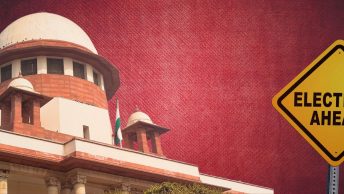There are no tanks on the streets of Delhi. With the possible exception of Kashmir, non-state-owned media is still permitted to function: some of it is quite critical of the government. There is no formal declaration of a state of Emergency. Rights have not, generally, been suspended. Courts still function. The one big-ticket constitutional amendment that was attempted by the first Modi regime—that could arguably be thought to compromise judicial independence—was invalidated by the Supreme Court as violating the Constitution’s basic structure. And yet, many concerned citizens, including judges, bureaucrats, politicians, activists, journalists, and academics, have been claiming that Indian democracy has been imperiled under the premiership of Narendra Modi, which began in 2014. To examine this claim, my article, titled Killing a Constitution with a Thousand Cuts: Executive Aggrandizement and Party-State Fusion in India, sets up an analytic framework for accountability mechanisms liberal democratic constitutions put in place to provide a check on the political executive. The assumption is that only if this framework is dismantled in a systemicmanner can we claim that democracy itself is in peril. This framework helps distinguish between actions that one may disagree with ideologically but are nonetheless permitted by an elected government, from actions that strike at the heart of liberal democratic constitutionalism. Although focused on India, the analytic framework should be relevant to many other states where democracy is allegedly deconsolidating.
Liberal democratic constitutions typically adopt three ways of making accountability demands on the political executive: vertically, by demanding electoral accountability to the people; horizontally, by subjecting it to accountability demands of other state institutions like the judiciary and fourth branch institutions; and diagonally, by requiring discursive accountability by the media, the academy, and civil society. This framework assures democracy over time—i.e., it guarantees democratic governance not only to the people today, but to all future peoples of India. Each elected government has the mandate to implement its policies over a wide range of matters. However, seeking to entrench the ruling party’s stranglehold on power in ways that are inimical to the continued operation of democracy cannot be one of them.
The article finds that the first Modi government in power between 2014 and 2019 did indeed seek to undermine each of these three strands of executive accountability. Unlike the assault on democratic norms during India Gandhi’s Emergency in the 1970s, there is little evidence of a direct or full-frontal attack during this period. The BJP government’s mode of operation was subtle, indirect, and incremental, but also systemic. Hence, the Article characterizes the phenomenon as “killing a constitution by a thousand cuts.” The incremental assaults on democratic governance were typically justified by a combination of a managerial rhetoric of efficiency and good governance (made plausible by the undeniable imperfection of our institutions) and a divisive rhetoric of hyper-nationalism (which brands political opponents of the party as traitors of the state).
Afterword: Since its resounding victory in the 2019 general elections, the Modi government appears to have moved into consolidation mode. No longer constrained by the demands of coalition partners, early signs suggest that it may abandon the incrementalist approach for a more direct assault on democratic constitutionalism.
*Tarunabh Khaitan is a Professor of Public Law & Legal Theory and the Vice Dean at the Faculty of Law, Oxford. He is also a Professor and Future Fellow at Melbourne Law School. He is the founding General Editor of the Indian Law Review and the founder & Chief Advisor of the Junior Faculty Forum for Indian Law Teachers.







Thanks for sharing. I read many of your blog posts, cool, your blog is very good.